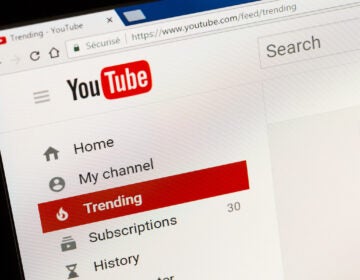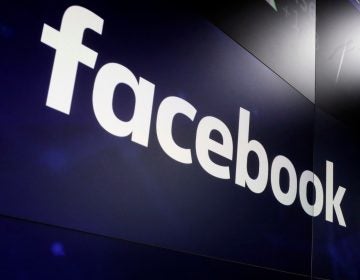20 years after its first upload, YouTube is changing the way people learn
Users of all ages turn to the platform to master new skills, solve problems, and learn on their own terms.
Listen 3:10
A man is crocheting and watching a tutorial video. (Ramil Gibadullin/Bigstock)
This story is from The Pulse, a weekly health and science podcast. Subscribe on Apple Podcasts, Spotify, or wherever you get your podcasts.
Find our full episode about the 20th anniversary of YouTube here.
This year marks 20 years since the first YouTube video was uploaded — and in that time, the platform has become more than just a place for funny videos and viral clips. YouTube is a learning tool for many people. Whether it’s a student looking for academic help, someone navigating daily tasks, or diving into a new hobby, chances are there’s a step-by-step tutorial on YouTube.
It’s hard to imagine life without the video platform. But for Vena, a graduate student at Temple University, that wasn’t always the case. When she moved to the U.S. from Shanghai in 2022, YouTube opened up a world of knowledge she hadn’t had access to before.
“Because I come from China, China blocked YouTube,” she said. “So, I never used it before I came to the U.S.”
Vena’s goal is to become a scriptwriter, and she uses YouTube to go beyond what she learns in class.
“I watched a lot of master classes about script writing on YouTube … and I followed a lot of online courses from Stanford, Harvard, and Yale.”, she said. “YouTube is very good because there are a lot of long videos … on TikTok every video is like 15 to 30 seconds, but on YouTube you can get long information.”
Her sister, Dina, finds value in a different corner of the platform — beauty tutorials. “I watched a lot of makeup videos, and I learned a lot of hacks. I learned about some products I never heard of before and I think it’s very helpful,” she said.
YouTube can be used to learn just about anything, and that’s part of what makes it so popular.
For health care worker Mike Brown, it has helped him save money on car maintenance. “I’ve learned to change the oil on my car. I’ve learned to change light bulbs. I’ve changed my brakes, rotors and pads,” Brown said. “If there’s certain things I could do myself that might save me money versus paying someone else to do it … that’s what led me to YouTube”
But what is it about the platform that makes it such an effective learning tool?
John Medina, a developmental molecular biologist and author of “Brain Rules,” says while the science isn’t fully settled, there are a couple of solid theories based on how the brain takes in information.
“Half of the brain is devoted to visual processing,” Medina said. “It’s the most of any sense that exists.”
Subscribe to The Pulse
That dominance helps explain why visual information — such as videos — is so effective at capturing attention and helps with retaining new concepts. “If I write out the word, “a sphere that’s rotating.” That’s a lot of information,” Medina said. “What if I just showed you a globe that’s spinning? You’d get that instantly.”
The second theory has to do with motion. “We pay tons of attention to moving objects,” Medina said. Our brains are naturally drawn to things that move — and YouTube, of course, is full of them. “What is YouTube if it’s not visual plus motion?” he said. “Ergo, a lot of us think that’s why you pay attention.”
That combination — visuals and motion — makes YouTube a powerful learning tool.
It has helped Michael Murphy learn the intricate art of amigurumi — the Japanese art of crocheting tiny animals and objects.
“A magic ring is how you start everything in amigurumi,” he said. “It’s really confusing, and it was really helpful to actually have the video and see several different people show me how to do it.”
YouTube’s usefulness even extends to home improvement projects.
WHYY’s Peter Crimmins often turns to the platform for home repairs and woodworking projects that most would consult a professional for. “I’ve cut a lot of wood in my time. I’ve installed a fair amount of things. But if you’re trying to do something that’s very specific and very complicated, YouTube is really helpful because everything is on YouTube”, Crimmins said. “Being able to see it really helps your understanding of it. Not just photos, you have to be able to see the video of it, see how things move and how parts come together.”
Medina, who began his career before digital tools like YouTube existed, sees instant access to information as a major game-changer for how people learn. “[If] I needed to learn something, I had to go traipse over to the library and spend three hours trying to trace something down,” he said.
“If I need an answer to a particular question right away … I’m really grateful to be able to — at my fingertips — look up some things.”
WHYY is your source for fact-based, in-depth journalism and information. As a nonprofit organization, we rely on financial support from readers like you. Please give today.






